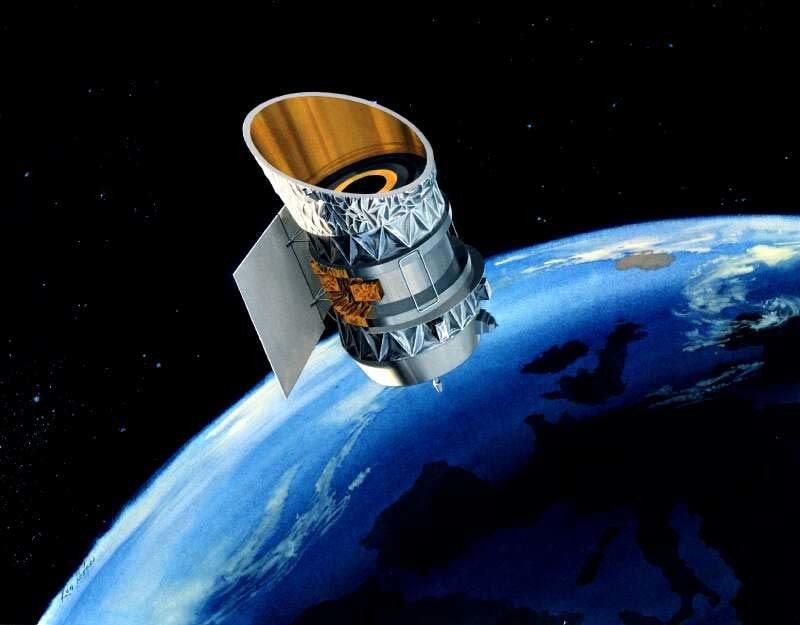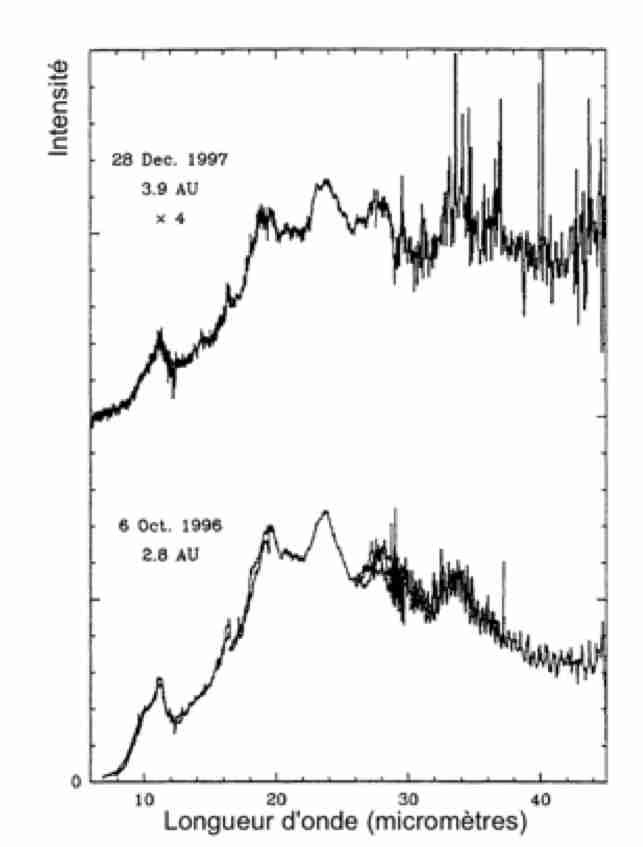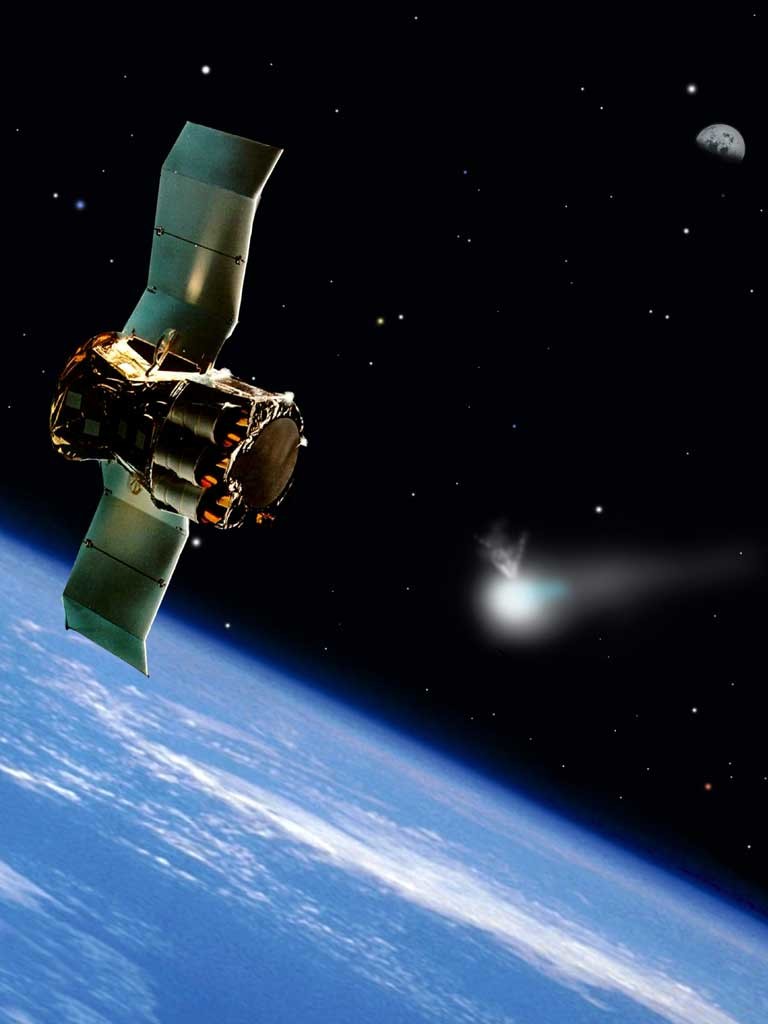However, it is with the five probes that arrived in 1986 close to Halley’s comet that the full spatial study of comets started. Their most famous result was the first image of a comet nucleus, obtained by the European probe Giotto. The following was just as glorious. Frustrated for not being able to join the exploration of Halley’s comet, NASA then launched its comet exploration with a series of missions; the first, in 1998, Deep Space 1, was designed to test ion propulsion but provided as a bonus the second image of a comet nucleus, that of 19P/Borrelly. Then came several missions specifically dedicated to comets: the Stardust mission launched in 1999, which collected grains ejected by comet 81P/Wild 2 and brought them back to the Earth in 2006, followed in 2002 by the lost probe Contour, and by Deep Impact with a successful impact on comet 9P/Tempel 1 in 2005; renamed Epoxy, this probe visited comet 103P/Hartley 2 in 2010.

Le Infrared Astronomical Satellite (« Satellite astronomique infrarouge ») a été lancé en 1983 pour réaliser réaliser un relevé complet du ciel dans les bandes infrarouges à 12, 25, 60 et 100 µm.
Crédit : NASA/JPL-Caltech
Spectre dans l’infrarouge moyen de la comète C/1995 O1 Hale-Bopp, obtenu par le satellite européen ISO (successeur de IRAS). La partie aux grandes longueurs d’onde est affectée par le bruit, en raison de la faiblesse du signal. En bas, avant le passage de la comète à son périhélie. En haut, après ce passage. L’émission est due à la poussière chauffée par le Soleil. Les différentes structures sont caractéristiques d’un silicate, l’olivine, qui forme donc une grande partie des grains.
D’après J. Crovisier et al., 1999. (ESASP 427, 147).Several artificial satellites got beautiful results on comets: NASA’s SWAS satellite, launched in 1998, the European satellites Odin in 2001, Herschel in 2009, and of course the Hubble Space Telescope, launched in 1990 and still in use. But the most impressive mission is undoubtedly the European Space Agency’s probe Rosetta. Launched in 2003, this probe reached the comet “Chury” in 2014, went into orbit around it and deposited on its surface the Philae robot. It still accompanies the comet, making images and analyzing the particles it ejected, and will attempt to land on it, eventually disappearing with the comet in the outer solar system.

Lancé en 1998, Le satellite SWAS a pour mission d'analyser de la composition des nuages interstellaires et collecte de données jusqu'en 2004. En 2005, SWAS reprend du service dans le cadre de la mission Deep Impact pour observer le résultat de la collision volontaire de l'impacteur de Deep Impact avec la comète Tempel 1.
Crédit : CFA
